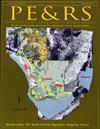基于特征选择策略的光学与SAR数据融合改进城市土地覆盖制图
IF 2
4区 地球科学
Q4 GEOGRAPHY, PHYSICAL
引用次数: 3
摘要
以福田区为研究区,提出了一种有效的融合光学和SAR数据的城市土地覆被制图框架。为了简化模型复杂度,提高映射效果,对各种特征选择方法进行了比较和评价。结果表明,特征选择可以消除不相关特征,略微提高特征之间的平均相关性,显著提高分类精度和计算效率。递归特征消除-支持向量机(RFE-SVM)模型获得了最好的结果,总体准确率为89.17%,kappa系数为0.8695。此外,本研究还证明了光学和SAR数据的融合可以有效地改善制图,减少不同土地覆被之间的混淆。本研究的新颖之处在于深入探讨了多源数据融合和特征选择在复杂城市环境下土地覆盖制图过程中的优势,并评估了不同特征选择方法之间的性能差异。本文章由计算机程序翻译,如有差异,请以英文原文为准。
Improving Urban Land Cover Mapping with the Fusion of Optical and SAR Data Based on Feature Selection Strategy
Taking the Futian District as the research area, this study proposed an effective urban land cover mapping framework fusing optical and SAR data. To simplify the model complexity and improve the mapping results, various feature selection methods were compared and evaluated. The results
showed that feature selection can eliminate irrelevant features, increase the mean correlation between features slightly, and improve the classification accuracy and computational efficiency significantly. The recursive feature elimination-support vector machine (RFE-SVM) model obtained the
best results, with an overall accuracy of 89.17% and a kappa coefficient of 0.8695, respectively. In addition, this study proved that the fusion of optical and SAR data can effectively improve mapping and reduce the confusion between different land covers. The novelty of this study is with
the insight into the merits of multi-source data fusion and feature selection in the land cover mapping process over complex urban environments, and to evaluate the performance differences between different feature selection methods.
求助全文
通过发布文献求助,成功后即可免费获取论文全文。
去求助
来源期刊

Photogrammetric Engineering and Remote Sensing
地学-成像科学与照相技术
CiteScore
1.70
自引率
15.40%
发文量
89
审稿时长
9 months
期刊介绍:
Photogrammetric Engineering & Remote Sensing commonly referred to as PE&RS, is the official journal of imaging and geospatial information science and technology. Included in the journal on a regular basis are highlight articles such as the popular columns “Grids & Datums” and “Mapping Matters” and peer reviewed technical papers.
We publish thousands of documents, reports, codes, and informational articles in and about the industries relating to Geospatial Sciences, Remote Sensing, Photogrammetry and other imaging sciences.
 求助内容:
求助内容: 应助结果提醒方式:
应助结果提醒方式:


